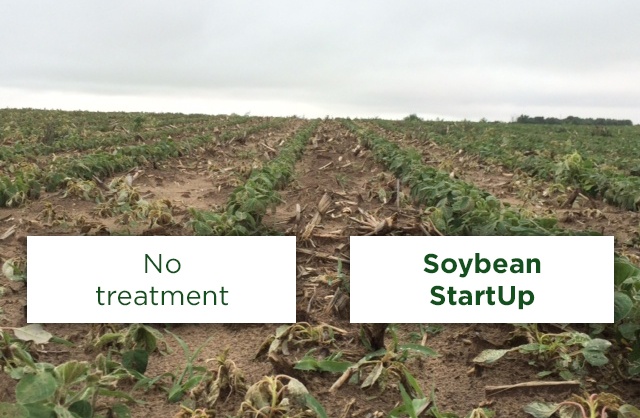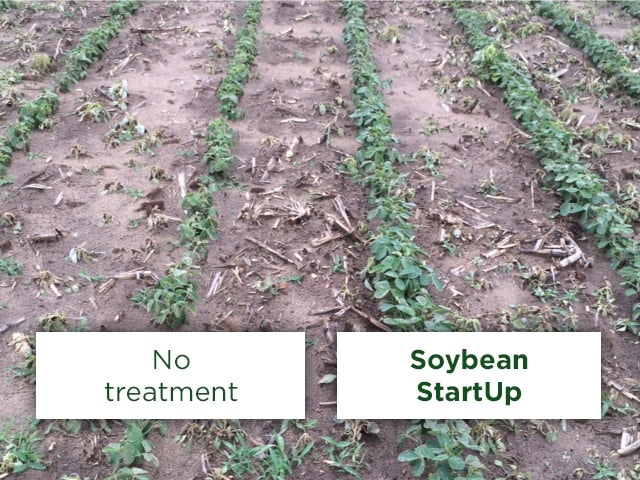 Many agricultural areas across the United States are facing weather-related challenges, but there are still opportunities to make the most out of what Mother Nature is dishing out.
Many agricultural areas across the United States are facing weather-related challenges, but there are still opportunities to make the most out of what Mother Nature is dishing out.
Terramar, a new product for row crops, is formulated to help crops stand up to abiotic stresses (such as heat and dry conditions) while also increasing nutrient uptake for better plant growth.
The photos below document the performance of Terramar applications made on corn, soybeans and wheat earlier this season, and they show some very strong visual results.
With another opportunity to apply Terramar now here (this time with fungicide or plant nutrition products on reproductive-stage corn and soybeans), we wanted to share these images as a reminder of the potential in this year's crop.
Here are the top 10 Terramar field pictures of 2023, so far:
1. Terramar on Corn – Ferris, Illinois
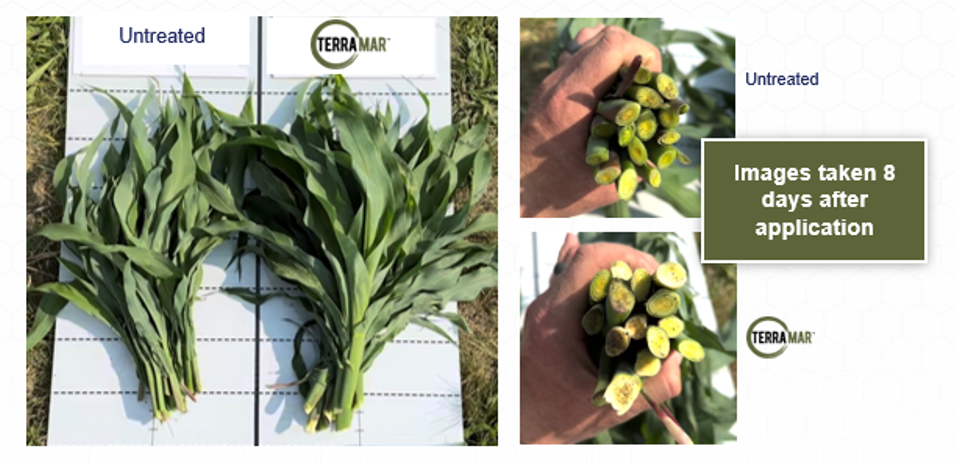 Dry conditions (No rain for 11-12 days). Terramar was applied at 1 pint/acre. Photos taken May 26, 2023, 8 days after application. 15 plants per bundle.
Dry conditions (No rain for 11-12 days). Terramar was applied at 1 pint/acre. Photos taken May 26, 2023, 8 days after application. 15 plants per bundle.
2. Terramar on Corn – Muscoda, Wisconsin
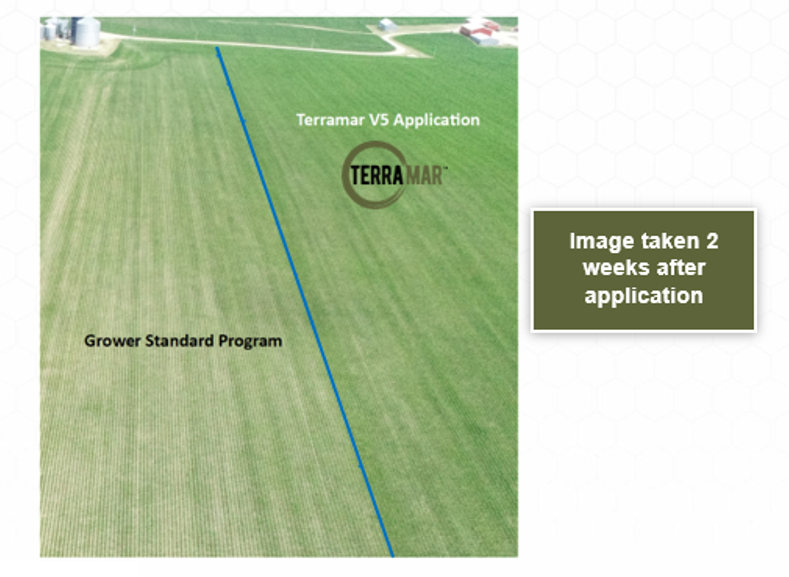 Corn crop planted April 29, 2023. Dry conditions (2.2” precipitation since planting). Terramar was applied at 1 quart/acre at V5. Photo taken June 21, 2023, two weeks after Terramar application.
Corn crop planted April 29, 2023. Dry conditions (2.2” precipitation since planting). Terramar was applied at 1 quart/acre at V5. Photo taken June 21, 2023, two weeks after Terramar application.
3. Terramar on Soybeans – Farmington, Illinois
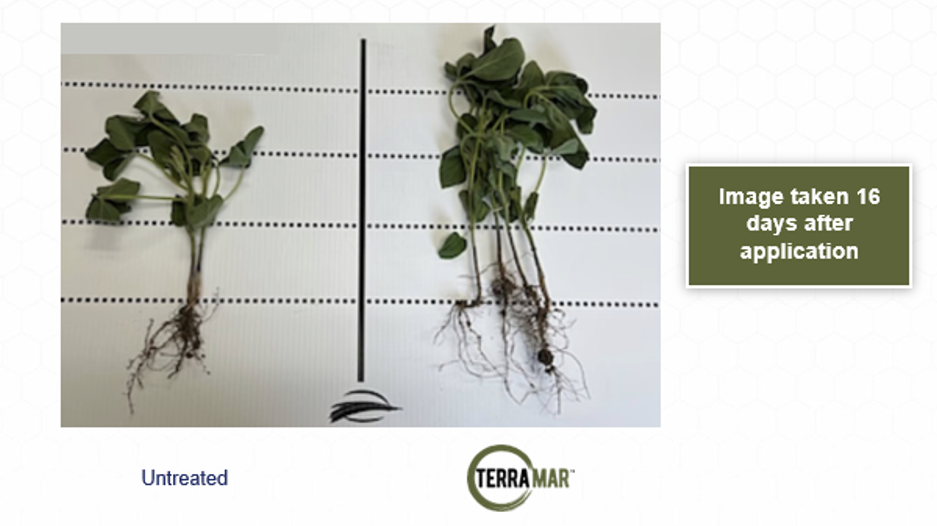 Terramar was applied at 1 pint/acre on May 29, 2023. Photo taken 16 days after Terramar application.
Terramar was applied at 1 pint/acre on May 29, 2023. Photo taken 16 days after Terramar application.
4. Terramar on Soybeans – East Chain, Minnesota
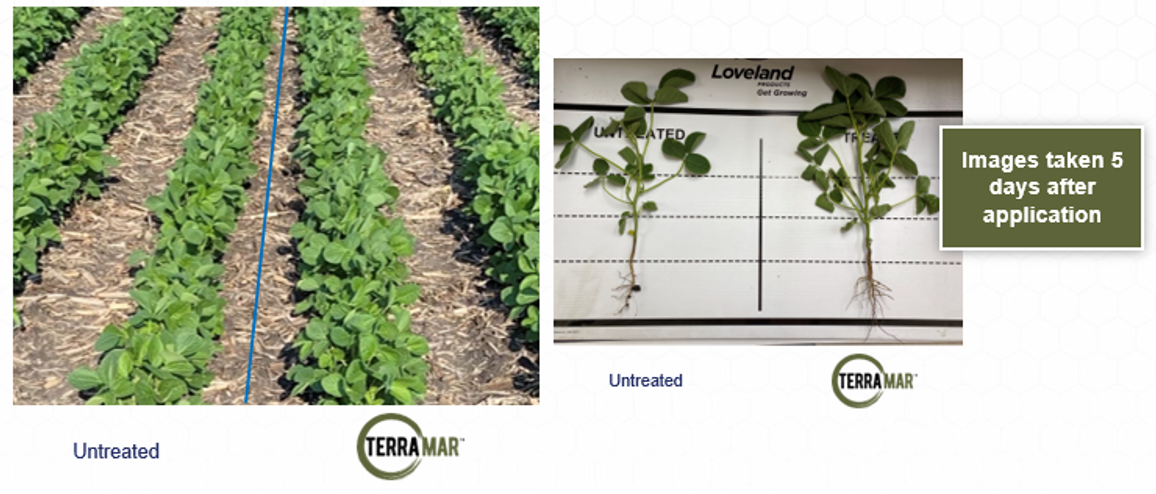 Terramar was applied at 1 quart/acre. Photos taken 5 days after Terramar application.
Terramar was applied at 1 quart/acre. Photos taken 5 days after Terramar application.
5. Terramar on Wheat – Kentucky
Terramar was applied twice, each time at 1 pint/acre prior to a sub-freezing event. Joint (head) was above ground. Photos taken mid-May.
6. Terramar on Wheat – Oberlin, Kansas
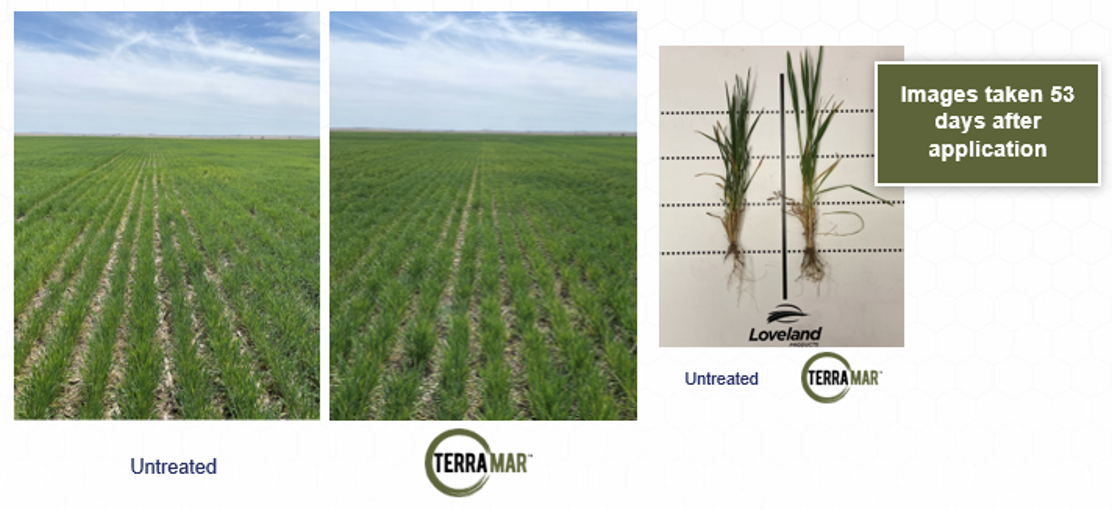 Terramar was applied at 1 quart/acre on March 24, 2023. Very dry conditions. Photos taken May 4, 2023, 53 days after Terramar application.
Terramar was applied at 1 quart/acre on March 24, 2023. Very dry conditions. Photos taken May 4, 2023, 53 days after Terramar application.
7. Terramar on Corn – Fairview, Illinois
Terramar applied at 1 pint/acre at V4 (left) & at 1pint vs 1 quart (right).
8. Terramar on Corn – Bennet, Nebraska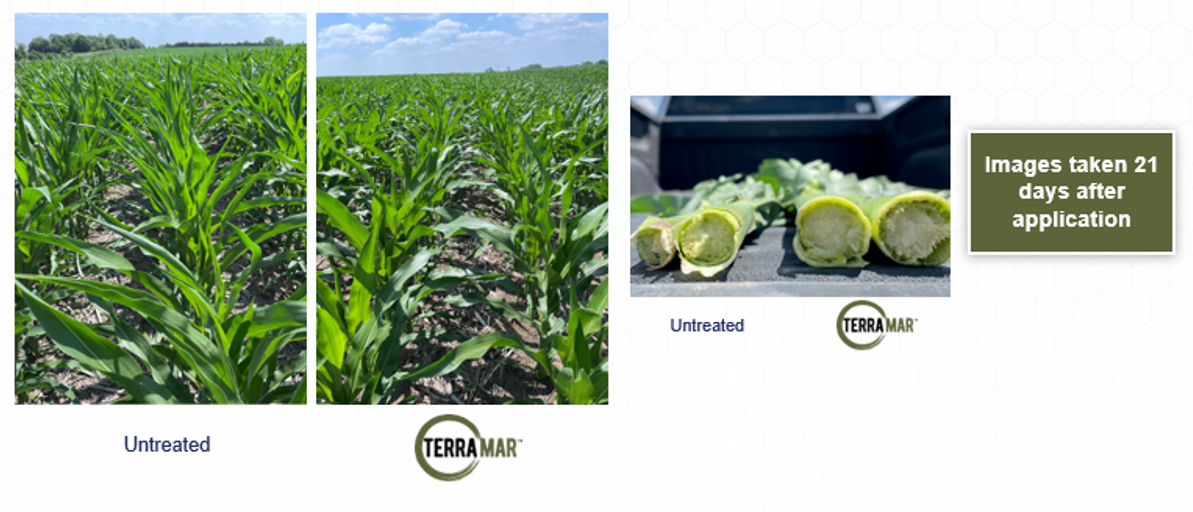
Terramar was applied at 1 pint/acre on May 30, 2023. Photo taken June 20, 2023, 21 days after Terramar application. Some leaf rolling observed on untreated corn. 86 degrees Fahrenheit.
9. Terramar on Corn – Ferris, Illinois
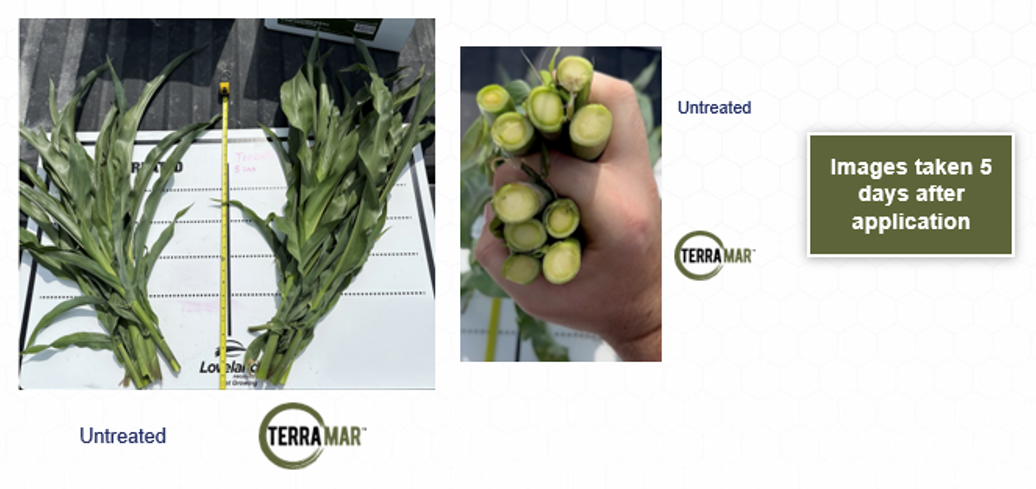 Terramar was applied at 1 quart/acre on on June 3, 2023. Photos taken 5 days after Terramar application. Plants taken 20 rows into each block; 1 plant every 20 steps. 5 plants per bundle.
Terramar was applied at 1 quart/acre on on June 3, 2023. Photos taken 5 days after Terramar application. Plants taken 20 rows into each block; 1 plant every 20 steps. 5 plants per bundle.
10. Terramar on Corn – Parker, South Dakota
Terramar was applied at 1 quart/acre at V4 on June 7, 2023. Photos taken 8 days after Terramar application.
*Bonus Photo* Terramar on Corn – Arcadia, Indiana
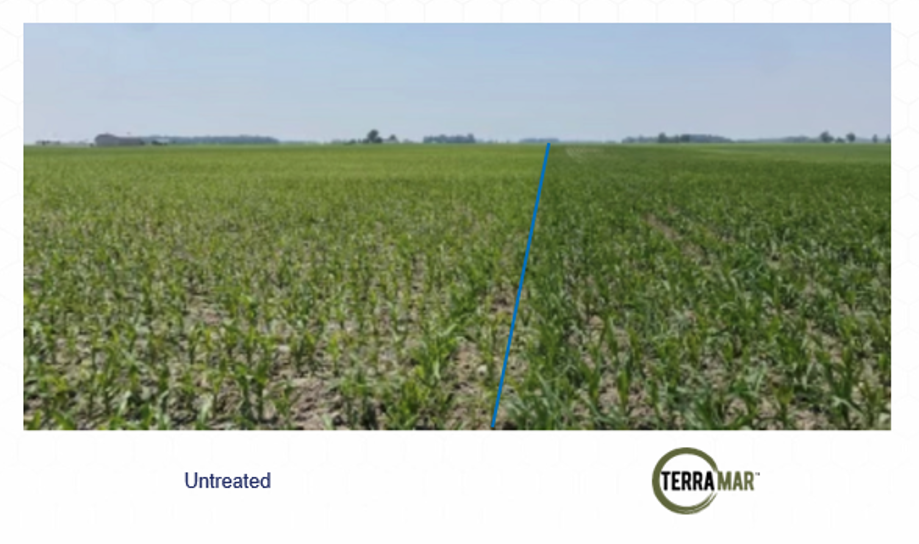 Terramar was applied at 1 quart/acre at V4-5.
Terramar was applied at 1 quart/acre at V4-5.
*Bonus Photo* Terramar on Wheat – Western Kansas
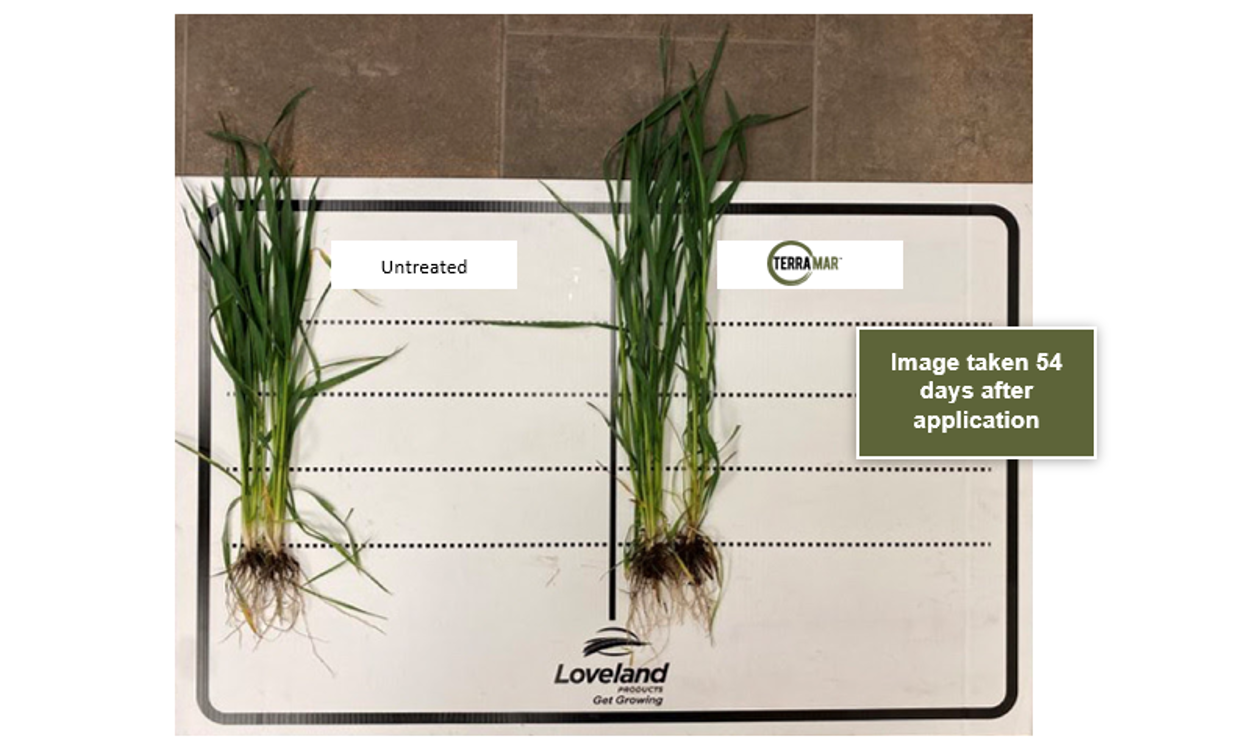 Terramar was applied at 1 quart/acre at first green-up (Feekes 3-4) on March 21, 2023. Cold and dry conditions. Photo taken 54 days after application.
Terramar was applied at 1 quart/acre at first green-up (Feekes 3-4) on March 21, 2023. Cold and dry conditions. Photo taken 54 days after application.
Learn more about Terramar by downloading the Terramar row crop bulletin.





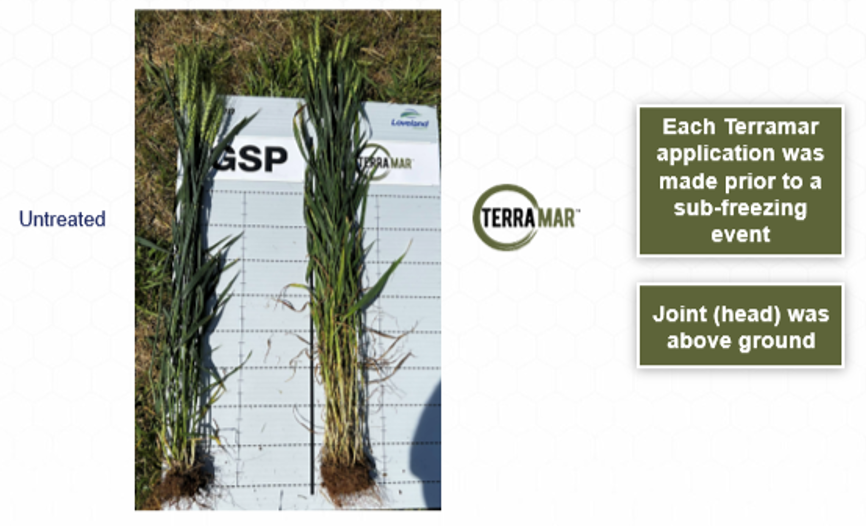
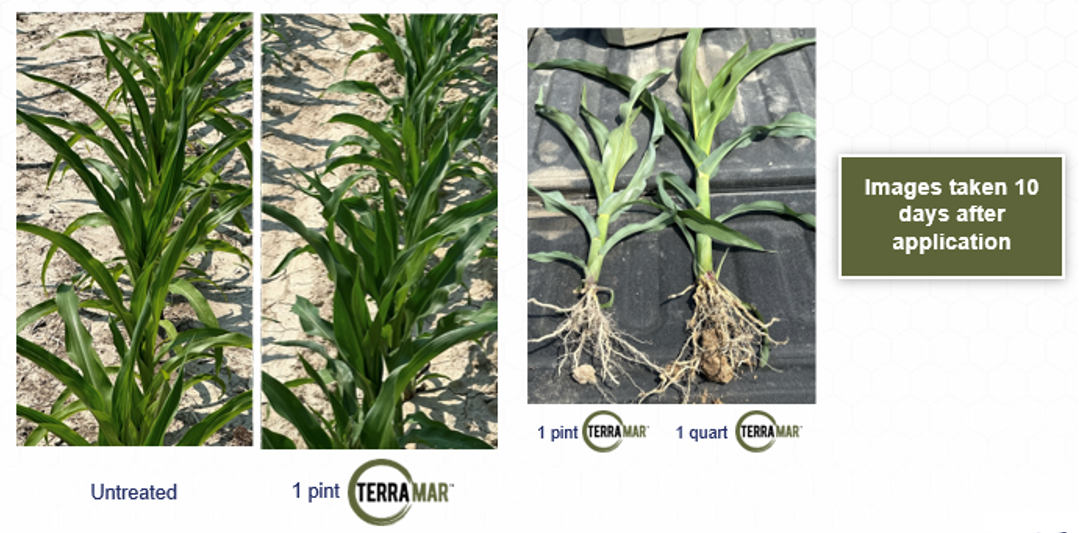
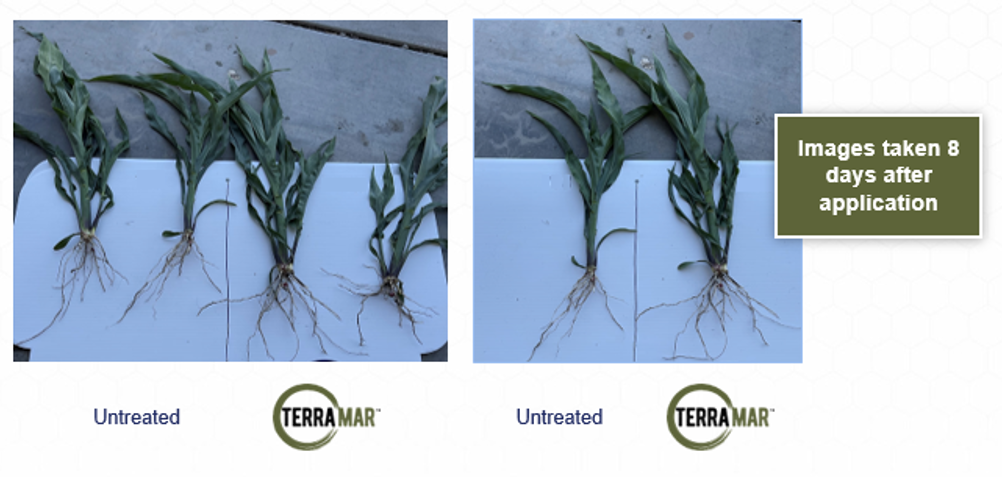

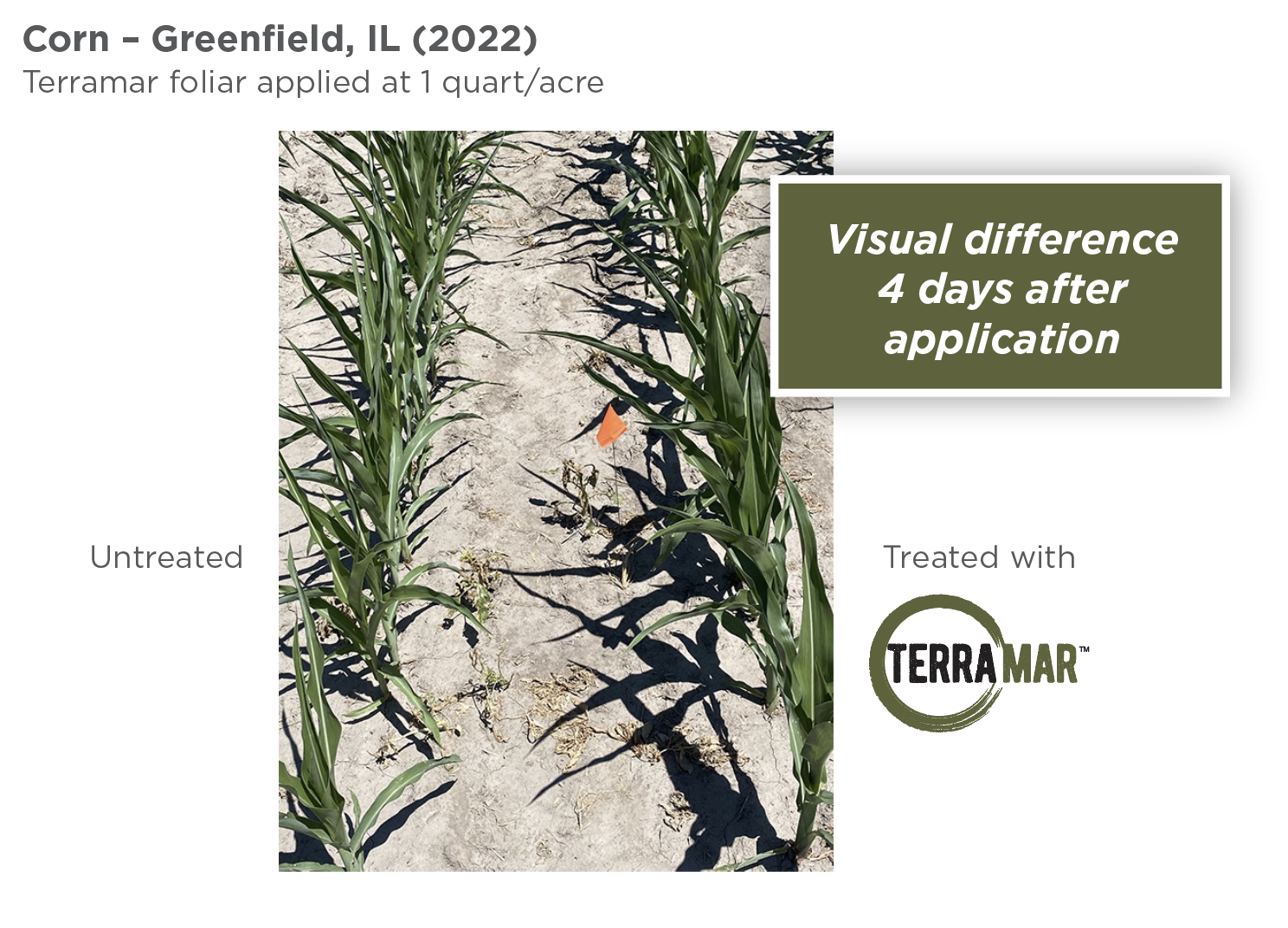
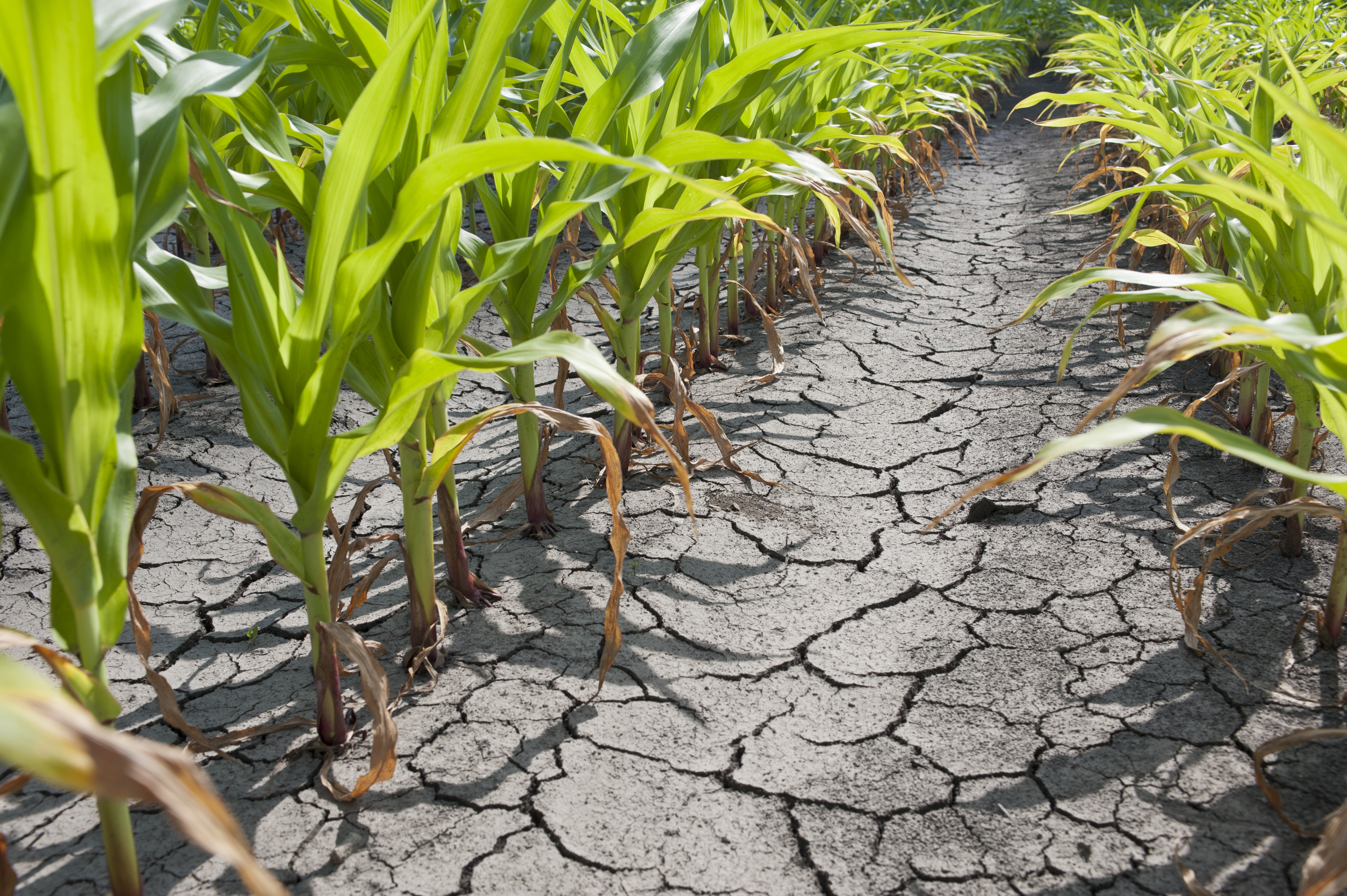
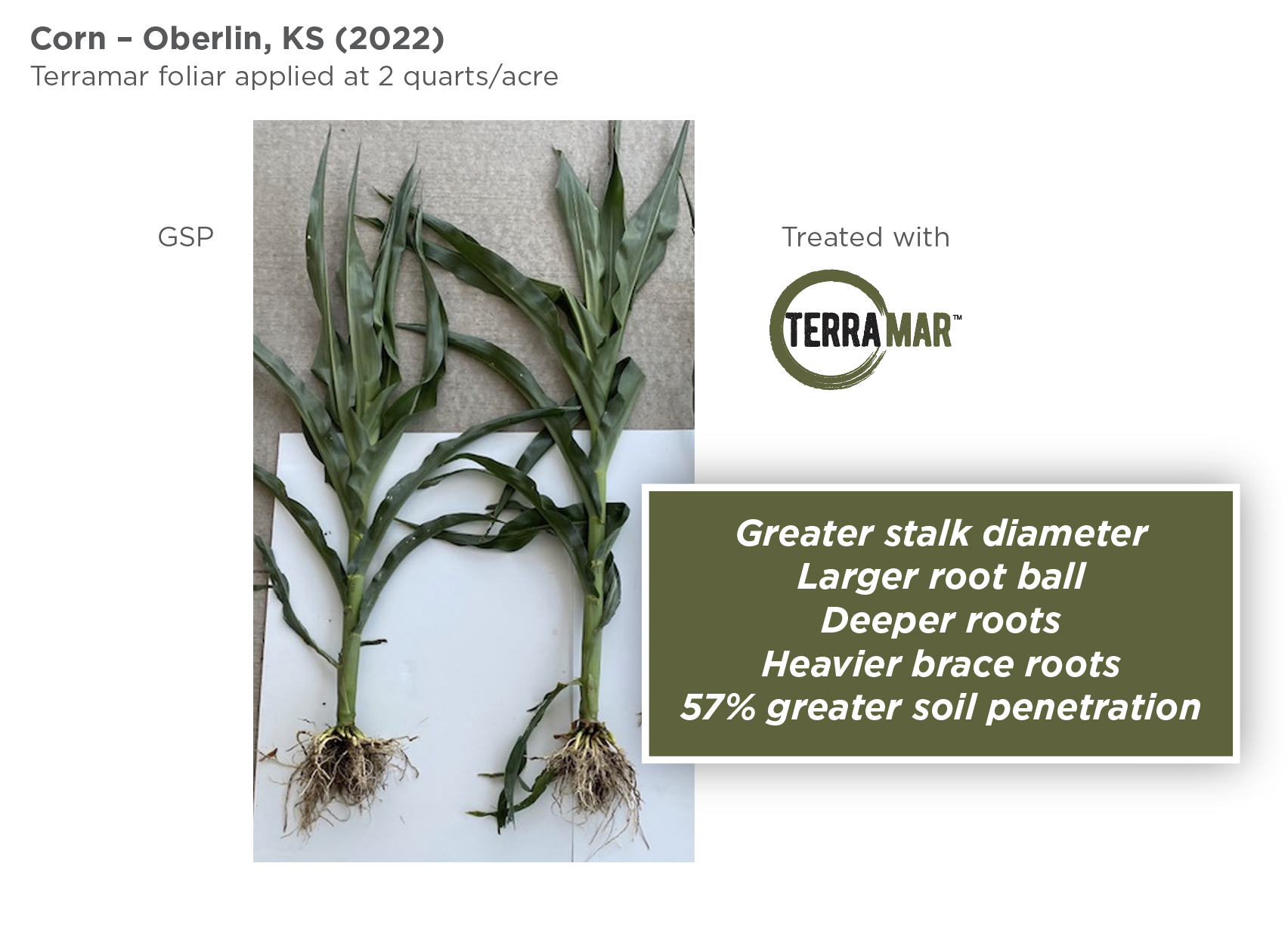

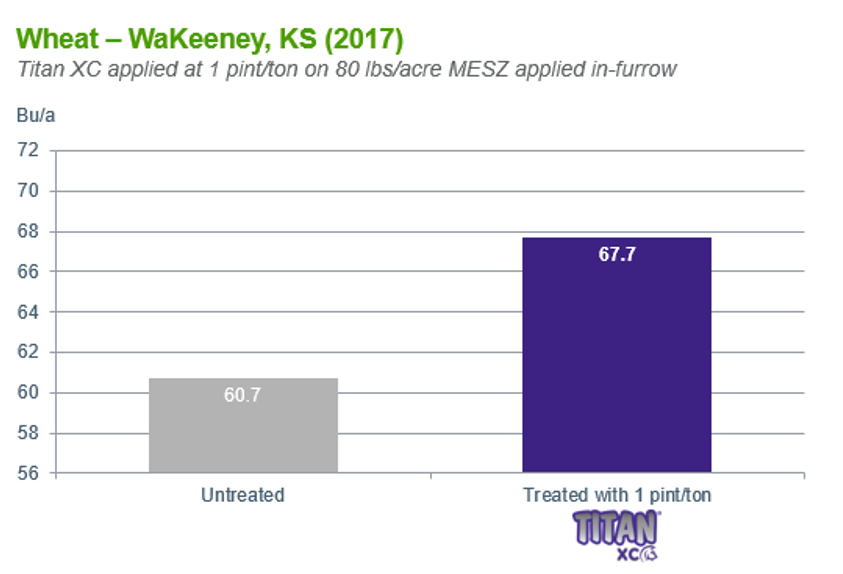
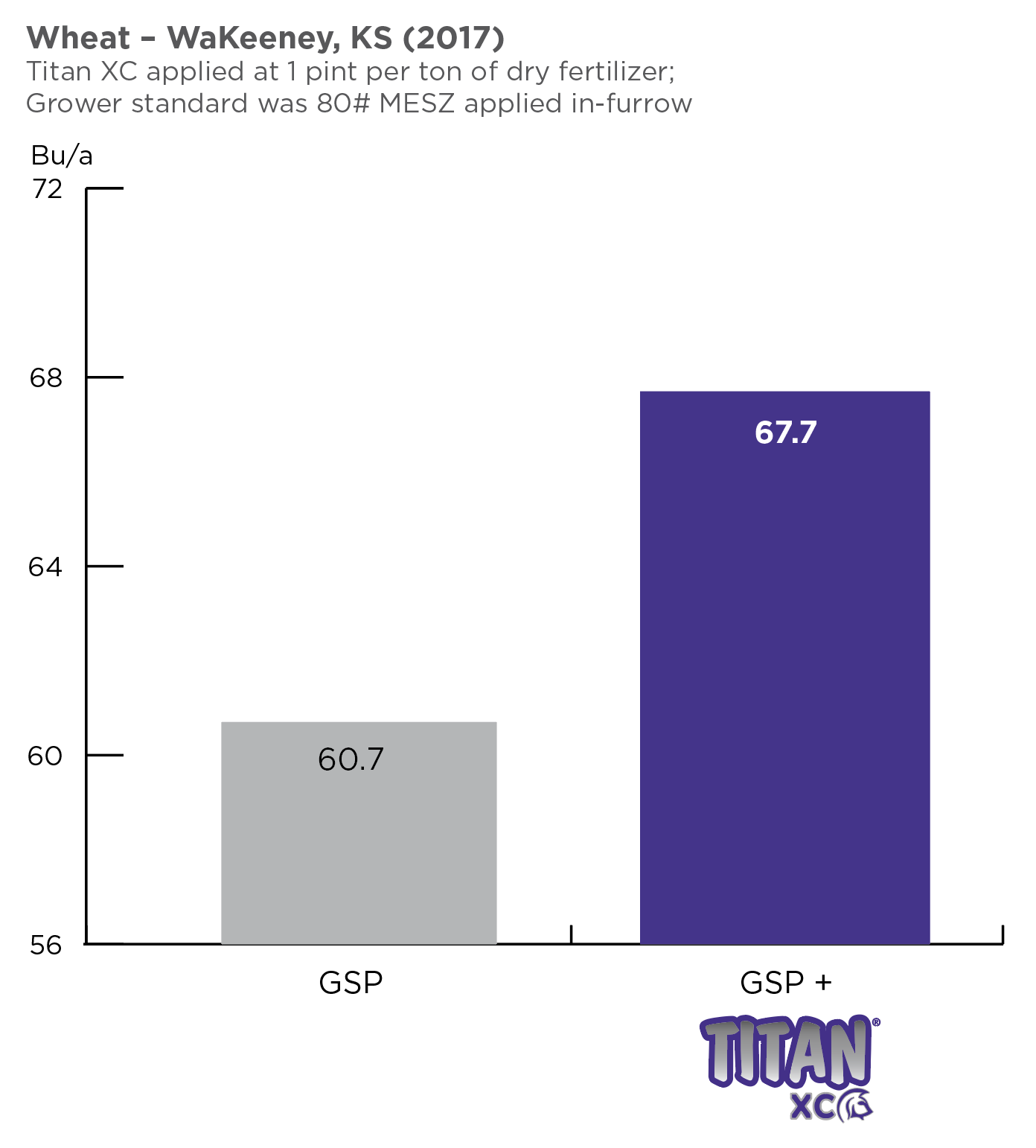

![[Trial Results] Soybean Startup Program Is a Standout in the Field](http://cdn2.hubspot.net/hubfs/269648/blog-files/soybean_startup_1.jpg)

